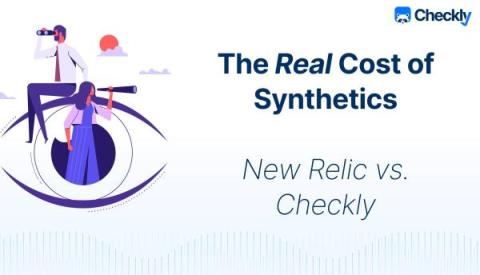Operations | Monitoring | ITSM | DevOps | Cloud
Synthetics
Cultivating Your Tech Garden: Enriching APM with Synthetic Monitoring
The Real Cost of Synthetic User Testing with AWS
What is Synthetic Transaction Monitoring? (And How Does it Affect User Experience)
The Real Costs of Synthetics: New Relic vs. Checkly
Browser Synthetic Monitoring: What is it, Types and Use Cases
Synthetic monitoring is a proactive approach that actively tests websites or apps, either scheduled or on demand, using automated testing scripts, ensuring that any issues are identified and resolved before they impact real users. This approach provides continuous oversight of the online presence, akin to having a vigilant eye on the website 24/7. In this article, we’re discussing synthetic monitoring, putting the accent on using browsers.
The real costs of Datadog Synthetics monitoring
How much do Synthetics matter to your team? I think they matter a whole lot. Back when I was a freelance developer, I doubled my annual income with synthetics. Working mainly in database optimizations, I would finish out a contract and leave a synthetic monitor running at a very low frequency on their service. When I saw a pattern of slower performance, I knew it was time to hit the team lead-up to ask if I could help.
Use Playwright codegen to create new Checkly browser checks in minutes
The Advent of Monitoring Day 1: What Are Synthetics and Why They Are Needed
This is the first part of our 12-day Advent of Monitoring series. In this series, Checkly's engineers will share practical monitoring tips from their own experience. Hey there! Here is my take on what synthetic monitoring means and why it’s awesome! I think it’s a very complicated word for a very straightforward concept. In fact, I am convinced, that once you've used it, you will never want to live without it.
Advancing Cloud Monitoring: Benefits of Synthetic Monitoring
The cloud changed how businesses work, making things more flexible and adaptable. But keeping track of app performance from a user’s point of view in this new setup is tough. Legacy tools tend to not give developers an understanding of their users' perspective. That's where synthetic monitoring comes in. It's a strong way to focus on users and fix the problems that legacy tools miss.










